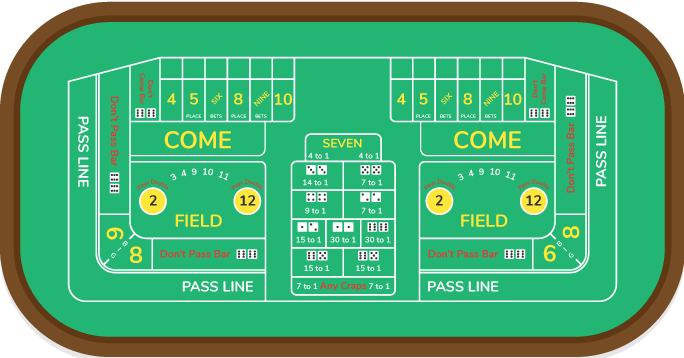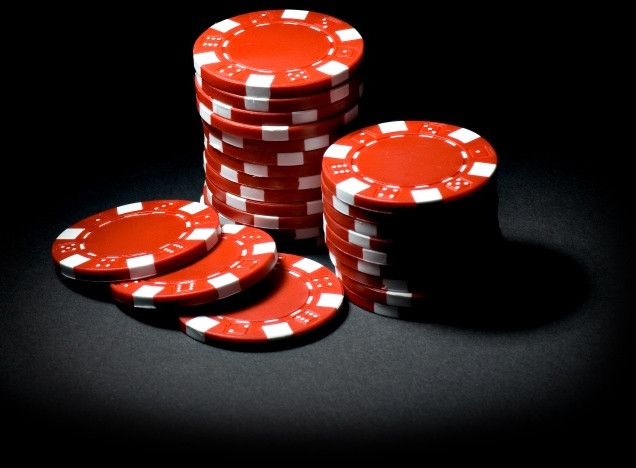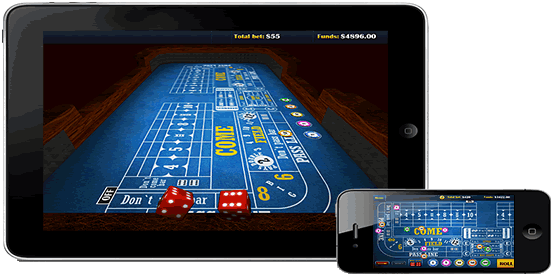- The Reviews
- UNIBET Review 2026
- MANSION Review 2026
- BETSAFE Review 2026
- BWIN Review 2026
- BETSSON Review 2026
- JETBULL Review 2026
- WILLIAM HILL Review 2026
- BET-AT-HOME Review 2026
- ZET Casino Review 2026
- CASINO.com Review 2026
- Mr GREEN Review 2026
- 888 Review 2026
- VEGAS CASINO ONLINE Review 2026
- LAS-VEGAS USA Casino Review 2026
- SUN PALACE Casino Review 2026
- ROYAL ACE Casino Review 2026
- PLANET 7 Casino Review 2026
- CLUB WORLD Casino Review 2026
- SILVER OAK Casino Review 2026
- Free Casino Games
US
- Best Online Casino Games Guide
- Choose Your Best Online Casino
- The Best Casino Games
- Online Card Games
- Best Online Machine Games
- Table Games
- Online Slots
- Complete Modern Online Blackjack Guide
- Free Blackjack Basic Strategy
- Simplified Blackjack Playing Strategy
- How to Play Blackjack Online Like Pros
- Advanced Blackjack Rules and Strategy
- Step-by-Step Blackjack Playing Procedures
- Blackjack Playing Options Guide
- Master Blackjack Card Counting
- Modern Blackjack Card Counters Challenge
- Which is the Best Blackjack Betting System?
- Nine-Count Blackjack Strategy Review
- Blackjack Myths and Errors
- Online Roulette
- Sportsbook
- Online Poker
- Online Video Poker
- Online Scratch Cards
- Online Bingo
- Online Baccarat
- Online Craps
- Asian Casino Games
- Online Keno
- Online Sic Bo
- Casino Bonuses
- Online Casino Reviews
- UNIBET Review, Casino, Sportsbook, Poker & Live Dealers
- BETSAFE Review, Casino, Poker, Live Dealers & Sportsbook
- MANSION Review, Casino, Sportsbook & Live Dealers
- BWIN Review, Sportsbook, Casino, Poker & Live Dealers
- BETSSON Review, Sportsbook, Casino, Live Dealers, Poker
- JETBULL Review -Casino, Sportsbook, Live Dealers
- BET_AT_HOME Review, Sportsbook, Casino, Poker, Live Dealers
- WILLIAM HILL Review -Casino, Sportsbook, Live Dealers, Poker
- ZET Casino Review
- Mr GREEN Review -Casino, Sportsbook & Live Dealers
- CASINO.com Review -Online Casino & Live Dealers
- Las-Vegas USA Casino Review
- Sun Palace Casino Review
- Royal Ace Casino Review
- Planet 7 Casino Review
- Club World Casino Review
- Vegas Casino Online Review
- Silver Oak Casino Review
- Free Casino Games
How to Play Online Craps
Learn to Play Craps
- We will explore Craps and How To Play.
- Read all about Pass Lines and Don’t Pass Bars.
- Explore the Odds behind your Craps Bets.
Craps is not a simple Game. In fact, most consider it to be the most complicated Game to master on the entire Casino Floor. Luckily, you don’t have to be a master to start playing this exhilarating game. All you need is to understand the goal of Craps, a few basic bets that will be the most beneficial to you and the Odds attached to them.
- Bonus Amount: $3,000 up to $10,000. The best daily bonuses on the internet.
- Games: An incredible number of slots, table games, and video pokers, including HTML5 games.
- Strong security protocols of 128-bit encryption
- Audited and guaranteed fair by TST
- Website: https://www.lasvegasusa.eu/casino/
- Established: 1999
- Software: Real Time Gaming (RTG)
- US and Canadians players supported
- Platforms Supported: Windows, Mac, iPhone, iPad, & Android.
- Type of Casino: Online & Instant or download.
- Free Slots Games: Yes
- Customer Support: 24/7 live chat support, as well as a toll-free phone number: +506-283-0061, and e-mail support
Write your review of Las-Vegas USA Casino
- Website: http://www.royalacecasino.eu
- Casino Type: download client, instant play, and mobile
- Software: Real Time Gaming (RTG)
- Owner: Emoney Processing Casinos LTD
- Established: 2009
- Casino Promotion: 100% Match Deposit Bonus up to $4,000, Daily and Weekly Bonuses
- Coupon Code: CASINO400
- Currencies: US$, Euros, Yen, Pounds, Bitcoin
- Mobile: both desktop and mobile compatibility
- VIP Program: 5 levels Available
- Support: World Class Support, 24/7 live chat & Toll-free phone number for USA and Canada
- Security: 128-bit SSL encryption
- Certified by: CDS (Central Disputes System)
- Languages: English
- License: Costa Rica
Write your review of Royal Ace Casino
- Bonus: 400% up to $10,000.
- Website: https://www.sunpalacecasino.eu/
- Software: Real Time Gaming (RTG)
- Deposit Methods: ClickandBuy, MasterCard, Money Order, Neteller, Visa Electron, instaDebit, Visa, MST Gift Card, Skrill, Bitcoin
- Withdrawal Methods: ACH, Cheque, Money Order, Neteller, Skrill
- Withdrawal Times: EWallets: 2-5 days, Credit / Debit Cards: 10-12 days, Bank Transfers: 7-12 days, Cheques: 21-28 days
- Pending Time: 3-7 days
- Withdrawal Limit: $5,000 per week
- Games: Incredible number of games of all types
- support: 24/7 through live chat, phone, or e-mail
- Support Response Time: 24 hours via email or Instant using Live Chat.
- Encryption: 128-bit SSL
- Audited and found fair by TST
- Languages: English.
- Progressive Jackpots: up to Million-Dollar.
- Restricted Countries: Bosnia, Costa Rica, Malaysia, Morocco, Netherlands, Russia.
Write a review of Sun Palace Casino
- Bonus: 320% Bonus + 45 Free Spins
- Casino Website: https://www.silveroakcasino.com/
- Casino Promotion: 320% Match Deposit Bonus up to $10,000 in 10 first deposits, up to $100 No Deposit Bonus, Weekly and Monthly Cashback, and much more.
- Casino Type: download client, instant play, mobile, and live dealers
- Software: Real Time Gaming (RTG)
- Live Casino: Available Live Dealers Casino
- Owner: Emoney Processing Casinos LTD
- Established: 2009
- Currencies: US$, Euros, Yen, Pounds, Bitcoin
- Mobile: both desktop and mobile compatibility
- VIP Program: 5 levels Available
- Support: World Class Support, 24/7 live chat & Toll-free phone number for USA and Canada
- Security: 128-bit SSL encryption
- Certified by: CDS (Central Disputes System)
- Languages: English
- License: Costa Rica
Write your review of Silver Oak Casino
- Bonus: First Deposit 350% Bonus + 25 Free Spins
- Website: https://www.planet7casino.com/
- Casino Type: download client, instant play, mobile, and live dealers
- Software: Real Time Gaming (RTG)
- Live Casino: Available Live Dealers Casino
- Owner: Emoney Processing Casinos LTD
- Established: 2008
- Casino Promotion: 200% Match Deposit Bonus up to $4,000, and much more.
- Currencies: US$, Euros, Yen, British Pounds, Bitcoin
- Mobile: both desktop and mobile compatibility
- VIP Program: Available
- Support: World Class Support, 24/7 live chat & Toll-free phone number for USA and Canada
- Security: 256-bit SSL encryption
- Certified by: CDS (Central Disputes System)
- Languages: English
- License: Costa Rica, Cyprus, the United Kingdom, and the Netherlands.
Write a review of Planet 7 Casino
- Bonus: Get 300% Match up to $3000 FREE Welcome Bonus
- Website: https://www.clubworldcasinos.com
- Software: Real Time Gaming (RTG)
- Mobile: Android, iPhone, iPad
- Casino Type: Download, Instant Play, Mobile
- Currency: US dollars
- Language: English
- License: Curacao
- Owner: Club World Casinos Group Casinos
- Established: 2005
- Audit: RTP Not publicly audited
- Currency: US dollars
Write a review of Club World Casino
- Bonus: Get 300% Match up to $3000 FREE Welcome Bonus
- Website: https://vegascasinoonline.eu/
- Established: 1999
- Software: Real Time Gaming (RTG)
- Currencies: US$
- US and Canadians players: supported
- Bonus Amount: up to $11,000 Match Bonus
- Platforms Supported: Windows, Mac, iPhone, iPad, & Android.
- Type of Casino: Download & Online Instant Play.
- Free Slots Games: Yes
- Owner: Main Street Vegas Group Casinos
- License: Costa Rica
- US Customer Support: (877) 691-5124
- Canada Customer Support: (888) 387-6717
- Email Address: [email protected]
- Live Chat: Yes
- Response Time: 24 hours via email or Instant using Live Chat.
- Languages: English.
- Progressive Jackpots: up to 1 Million-Dollar.
Write a review of Vegas Casino Online
What is Craps?
Craps is a betting Game where bets and winnings are dependent on the outcome of the roll of two six-sided dice. The most intricate feature of learning how to play Craps is the table itself where all of your possible bets are laid out before you. Each section of the confusing Table Layout represents a different bet that you can make. Take the time to learn these bets one by one and you’ll soon be feverishly rolling the dice yourself hoping for the best.
Craps Bets
Let’s start with the simplest bets to understand, which also happen to be the most beneficial for a Craps Player. You can tackle the Odds and strategy behind more advanced bets later, but these are the bets you should be familiar with in order to begin your Craps fun.
Craps is composed of rounds in which two dice are rolled to decide the results of bets.
“Come out” is the name of the first roll. The come-out roll will resolve bets if a 2, 3, 7, 11, or 12 total is rolled since such rolls will stop the round at once. The “point” is established and the round will continue if a total of 4, 5, 6, 8, 9, or 10 is rolled. On top of the number that is established as the point, you will see a white puck. The dice will continue to be rolled until the point is rolled again or a 7 is rolled. You will find below the explanations of the various bets.

Pass Line
Wagering on the pass line is the simplest and most basic of all the craps wagers.
The pass line pays even money. Place your bet on the “Pass Line” area. You can roll the dice after you have placed this wager. The bet wins if a 7 or 11 comes up.
The bet loses if a 2, 3 or 12 comes up. The player’s bets last until either the point is made (the bet wins) or a 7 is rolled (the bet loses.)
Play this bet by placing your desired number of chips in the section marked Pass Line. The dice are then rolled for the first time. A ‘Natural’ or total of 7 or 11 means your Pass Line bet wins at a ratio of 1:1. ‘Craps’ or a roll equal to 2,3, or 12 automatically means you’ve lost 100% of your bet. If a 4,5,6,7,9, or 10 is rolled, that number becomes the ‘Point’. A chip that says ‘On’ is placed next to the corresponding number. The dice are rolled over and over again until the ‘Point’ (the number received on the first roll) or a 7 is rolled. If the ‘Point’ is rolled before 7, you win 1:1. If the 7 is rolled first, you lose all of your bet.
Taking Odds
There is no house edge on an “odds” bet in Craps. You can take odds on your pass line wager any time after the come-out roll. You place the bet behind your original pass line bet. The sign to the left of the table shows the amount of odds you can take. You will win your odds bet and pass line bet if the point is made before a seven is rolled. The odds line bet will payout at 6-5 if the point is six or eight, 3-2 if the point is five or nine, and 2-1 if the point is four or ten.
The odds multiples permitted are explained below:
- 1X – odds bet equal to your pass line bet
- 2X – odds bet of double your pass line bet
- Full Double Odds – 2.5 times odds on six or eight and double on all other numbers
- 3X – odds wager of triple your pass line bet
- 3-4-5X – 3 times odds on 4 and 10, 4 times odds on 5 and 9, 5 times odds on 6 and 8
- 5X – odds bet of 5 times your pass line bet
- 10X – odds bet of 10 times your pass line bet
- 20X – odds bet of 20 times your pass line bet
- 100X – odds bet of 100 times your pass line bet
Don’t Pass Bar
Think of this as the opposite of the pass line bet. You will win even money if two or three is rolled. You will lose if a 7 or 11 is rolled. The bet is a push if a 12 is rolled. After the point is established, you win if a seven is rolled before the point is made.
If you understand the Pass Line bet, then the Don’t Pass Bar should be a piece of cake. The Don’t Pass Bar is the exact opposite of the Pass Line. This means a natural on the first roll means you lose while a roll of 2 or 3 pays 1:1. A 12 acts as a push like in Blackjack (a possibility not present when making a Pass Line bet). Rolling any other number sets a ‘Point’. A 7 must then be rolled before the ‘Point’ in order to win.
Laying Odds
When you are laying odds on the Don’t Pass bet, you are wagering on a 7 being rolled before the point. The Laying Odds bet payout is as follows – if the point is:
- 4 or 10, the payout is 1-2
- 5 or 9, the payout is 2-3
- 6 or 8, the payout is 5-6
The odds multiplier is in effect to set the limits of the amount of odds the player can lay.
Additional Bets
After your initial bets, you can increase your opportunities for wins in Craps by adding additional bets under certain circumstances. There are two additional bets that correspond to the Pass Line and Don’t Pass Bar that can help you increase your profit on both of these bets.
Always remember that the amount put on an additional bet cannot, in any case, be more than double the amount of your original bet.
Come Bets
To place a come bet, place your chips on the area marked “Come”. After the next roll, the bet will move up to the number rolled. You will win the come wager if that number is made before a seven is rolled. You will win the come bet at even money, just like the Pass Line, if a seven or eleven is rolled on the first roll of the come bet.
If a two, three, or twelve is rolled on the first roll of the come bet, the bet loses.
And also, just like the Pass Line, you may take odds on your come bet after the first roll by placing your bet behind the come bet after it has been moved to the number.
A unique circumstance exists with the come wager: if there are still active come wagers when the point is made then special rules apply to the come-out roll. The come-out roll is still active to the come wagers but does not apply to the respective odds wagers. If the come wager is resolved on a come-out roll, then the odds wagers are returned.
Don’t Come Wager
The Don’t Come wager is like the don’t pass wager, but it is made on a non-come out roll.
Odds on Pass Line
This additional bet can only be played after a ‘Point’ has already been set by the first roll of the die. In effect, this bet means that you are putting additional money on rolling the ‘Point’ for a second time before rolling a seven. This bet pays differently depending on the ‘Point’. A 4 or 10 will pay 2:1, a 5 or 9 pays 3:2, while a 6 or 8 pays 6:5. If a 7 is rolled, however, you will lose both your original bet and your Odd on Pass Line bet.
Odds on Don’t Pass Bar
This bet can be made after the ‘Point’ has been set for a Don’t Pass Bar Bet. The rules and payouts are exactly the same as ‘Odd on Pass Line’.
While there are a great many extra bets to be made and considered while playing Craps, these are the most basic and the most beneficial options a player has. In fact, these bets have some of the best Odds on the entire Casino Floor. So if your lack of knowledge is discouraging you, don’t let it! These basic bets are enough to get you started at the Craps Tables where you’ll soon pick up the rest. If you still aren’t comfortable playing at a real Casino, try playing first at an Online Casino to test your different options and until you feel confident with a few basic moves.
Place Bets
The “place” numbers in craps are 4, 5, 6, 8, 9, and 10. The place bet lets you cover all or some of the place numbers at once, without waiting for the come-out roll or the come wagers. During the come-out roll, place bets wagers are turned “off”.
Big 6/8
You are betting that a 6 and/or an 8 will be rolled before a 7. This pays even money.
Buy Bets
Buy Bets are the same as Place Bets, except there are different payouts. You may buy any of the place numbers by betting that number will be rolled before a 7 is rolled. All the buy bets pay 1-1 minus a 5% house commission.
Hard Ways
The four different hard ways bets are 4, 6, 8 and 10. A hard way is arriving at one of the even points with a pair. For, example, two 4s would equal a hard 8. The house pays as follows:
- Hard 4 or 10 pays 7-1
- Hard 6 or 8 pays 9-1
Lay Bets
Lay bets are the opposite of buy bets. You lay odds that a 7 will be rolled before any of the points. You must pay a 5% commission on the fair odds. Fair odds are as follows:
- 4 and/or 10 pays 1-2
- 5 and/or 9 pays 2-3
- 6 and/or 8 pays 5-6
Place Bet
You may wager on any of the points. If the number you wagered on is rolled before a 7, then you will win according to the following chart:
- 4 and/or 10 pays 9-5
- 5 and/or 9 pays 7-5
- 6 and/or 8 pays 7-6
Proposition Bets
Proposition bets are placed just on the next roll (one roll bets).
Craps 2
A bet that a 2 will be thrown on the next roll will payout at 30-1.
Craps 3
bet that a 3 will be thrown on the next roll will payout at 15-1.
7
A bet that a 7 will be thrown on the next roll will payout at 4-1.
11
A bet that an 11 will be thrown on the next roll will payout at 15-1.
Craps 12
A bet that a 12 will be thrown on the next roll will payout at 30-1.
Any Craps
A bet that a 2, 3 or 12 will be thrown on the next roll will payout at 7-1.
Field Bet
A bet that a 2, 3, 4, 9, 10 or 11 will be thrown on the next roll; the 3, 4, 9, 10 and 11 will pay even money and the 1 and 12 will payout at 2-1.
Was This Helpful?
Recommend us on Facebook










